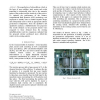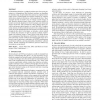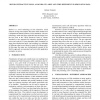102
click to vote
VLUDS
2010
14 years 1 months ago
2010
Traditionally, analysis of flow fields resulting from computational fluid dynamics (CFD) calculations is a sequential process. The flow area defined by surrounding geometry is tes...
SP
2010
IEEE
14 years 1 months ago
2010
IEEE
The Computational Fluid Dynamics code Overflow includes as one of its solver options an algorithm which is a fairly small piece of code but which accounts for a significant portio...
ICPPW
2009
IEEE
14 years 4 months ago
2009
IEEE
Current petascale systems have tens of thousands of hardware components and complex system software stacks, which increase the probability of faults occurring during the lifetime ...
PC
2002
14 years 6 months ago
2002
Saddle-point problems give rise to indefinite linear systems that are challenging to solve via iterative methods. This paper surveys two recent techniques for solving such problem...
CGF
2008
14 years 7 months ago
2008
Dye advection is widely used in experimental flow analysis but has seen less use for visualization in computational fluid dynamics. One possible reason for this disconnect is the ...
WCE
2007
14 years 8 months ago
2007
- The manufacture of nitrocellulose, which is the basis of most artillery, tank, mortar and rocket propellant is intrinsically risky due to the energetic nature of the product and ...
PDPTA
2003
14 years 8 months ago
2003
This paper describes an object-oriented framework for solving computational fluid dynamics problems on parallel computers. The design and components of the framework are discussed ...
DAGSTUHL
2010
14 years 8 months ago
2010
We have adopted a numerical method from computational fluid dynamics, the Lattice Boltzmann Method (LBM), for real-time simulation and visualization of flow and amorphous phenomen...
APVIS
2010
14 years 8 months ago
2010
Understanding fluid flow is a difficult problem and of increasing importance as computational fluid dynamics produces an abundance of simulation data. Experimental flow analysis h...
WSC
2007
14 years 9 months ago
2007
SimVis is a novel technology for the interactive visual analysis of large and complex flow data which results from Computational Fluid Dynamics (CFD) simulation. The new technolo...




